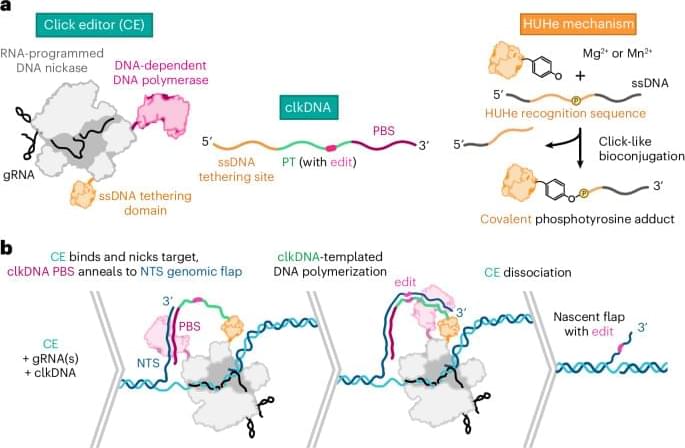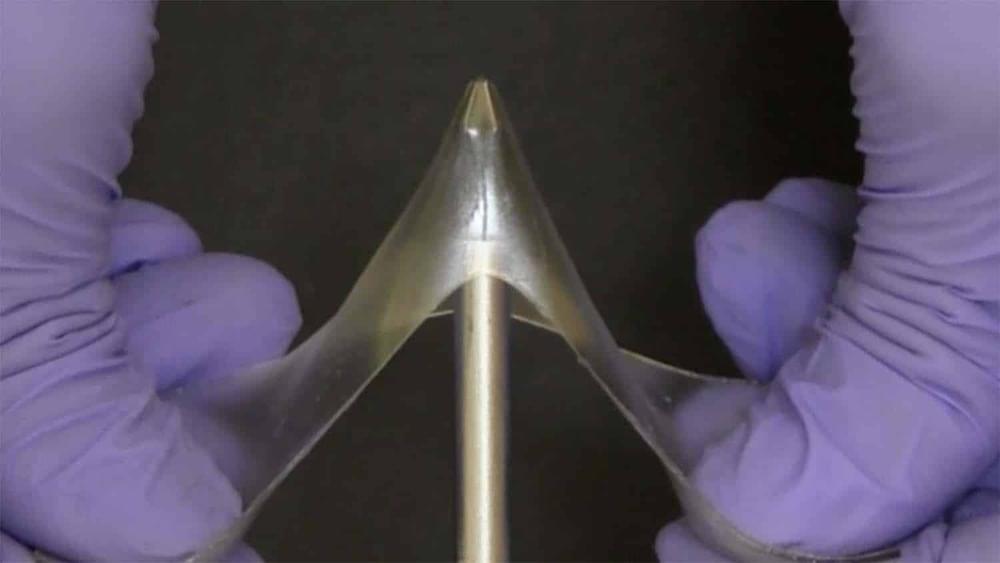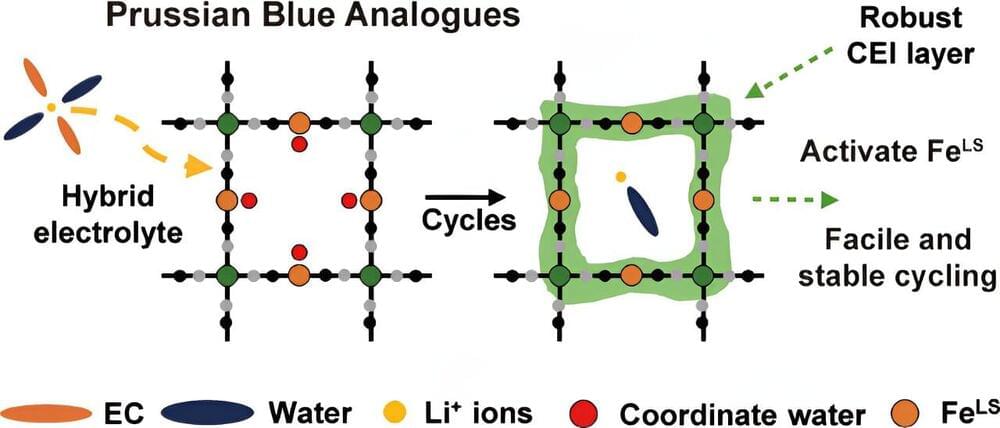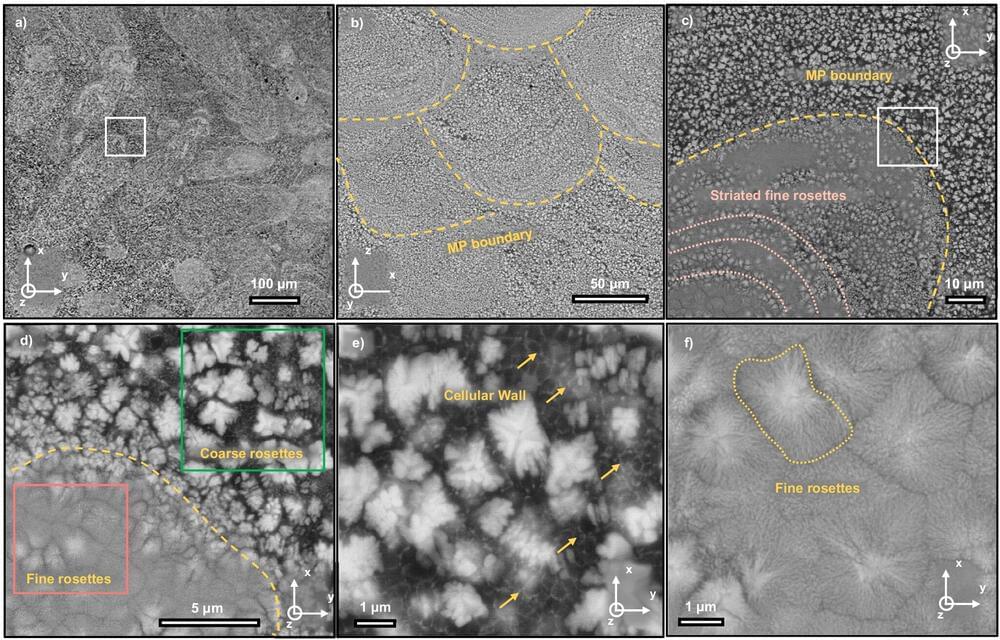An international research collaboration, including a group from Cornell Engineering, has applied a new X-ray-based reconstruction technique to observe, for the first time, topological defects in a nanoscale self-assembly-based cubic network structure of a polymer-metal composite material imaged over a relatively large sample volume.
Category: engineering – Page 26
We developed click editors, comprising HUH endonucleases, DNA-dependent DNA polymerases and CRISPR–Cas9 nickases, which together enable programmable precision genome engineering from simple DNA templates.
This plant that could survive the harsh conditions on Mars, which could help future human missions to explore and terraform the red planet.
A team of researchers, affiliated with UNIST has made a significant breakthrough in developing an eco-friendly dry electrode manufacturing process for lithium-ion batteries (LIBs). The new process, which does not require the use of harmful solvents, enhances battery performance while promoting sustainability.
The findings of this research have been published in the July 2024 issue of Chemical Engineering Journal.
Led by Professor Kyeong-Min Jeong in the School of Energy and Chemical Engineering at UNIST, the research team has introduced a novel solvent-free dry electrode process using polytetrafluoroethylene (PTFE) as a binder. This innovative approach addresses the challenges associated with traditional wet-electrode manufacturing methods, which often result in non-uniform distribution of binders and conductive materials, leading to performance degradation.
Researchers at the University of Michigan have found a way to examine tiny structures, such as bacteria and genes, with reduced damage compared to traditional light sources.
The new technique involves spectroscopy, which is the study of how matter absorbs and emits light and other forms of radiation, and it takes advantage of quantum mechanics to study the structure and dynamics of molecules in ways that are not possible using conventional light sources.
“This research examined a quantum light spectroscopy technique called entangled two-photon absorption (ETPA) that takes advantage of entanglement to reveal the structures of molecules and how ETPA acts at ultrafast speeds to determine properties that cannot be seen with classical spectroscopy,” said study senior author Theodore Goodson, U-M professor of chemistry and of macromolecular science and engineering.
University of Florida senior engineering students, collaborating with peers and the U.S. Army, developed a vehicle camouflage deployment device that enhances battlefield safety and efficiency. The project, which spanned three semesters and involved input from soldiers, resulted in a device that significantly speeds up the camouflage process, uses existing materials more effectively, and adapts to various ground conditions.
University of Florida and Georgia Tech engineering students developed a vehicle camouflage system for the U.S. Army, enhancing camouflage speed and safety, and demonstrating the potential of academic-military collaboration to solve practical defense challenges.
What began as a class project for senior engineering students at the University of Florida evolved into a practical solution for soldiers, providing them with a quicker, easier, and safer method to camouflage their vehicles on the battlefield.
Researchers have created a new class of materials called “glassy gels” that are very hard and difficult to break despite containing more than 50% liquid. Coupled with the fact that glassy gels are simple to produce, the material holds promise for a variety of applications.
Gels and glassy polymers are classes of materials that have historically been viewed as distinct from one another. Glassy polymers are hard, stiff and often brittle. They’re used to make things like water bottles or airplane windows. Gels – such as contact lenses – contain liquid and are soft and stretchy.
“We’ve created a class of materials that we’ve termed glassy gels, which are as hard as glassy polymers, but – if you apply enough force – can stretch up to five times their original length, rather than breaking,” says Michael Dickey, corresponding author of a paper on the work and the Camille and Henry Dreyfus Professor of Chemical and Biomolecular Engineering at North Carolina State University. “What’s more, once the material has been stretched, you can get it to return to its original shape by applying heat. In addition, the surface of the glassy gels is highly adhesive, which is unusual for hard materials.”
Joe Engle, who had the distinction of being the only astronaut to pilot an X-15 aircraft and a space shuttle, died in Houston on Wednesday, July 10. He was 91 years old.
NASA announced the death of Engle, a retired U.S. Air Force major general. The space agency said in its news release that Engle was the last surviving X-15 pilot.
The Kansas native graduated in 1955 from the University of Kansas, Lawrence, with an aeronautical engineering degree. According to his NASA biography, he “received his commission through the Air Force ROTC program at the University of Kansas and entered USAF flying school in March 1956.”
Prussian blue (PB), a well-known pigment used to dye jeans, has been recognized as an emerging material for next-generation batteries. A team of researchers, led by Professor Hyun-Wook Lee in the School of Energy and Chemical Engineering at UNIST has made a significant breakthrough in the development of low-cost, high-performance lithium-ion batteries (LIBs) using PB, leading to significantly reduced battery prices.
Purdue University material engineers have created a patent-pending process to develop ultrahigh-strength aluminum alloys that are suitable for additive manufacturing because of their plastic deformability.
Haiyan Wang and Xinghang Zhang lead a team that has introduced transition metals cobalt, iron, nickel and titanium into aluminum via nanoscale, laminated, deformable intermetallics. Wang is the Basil S. Turner Professor of Engineering and Zhang is a professor in Purdue’s School of Materials Engineering. Anyu Shang, a materials engineering graduate student, completes the team.
“Our work shows that the proper introduction of heterogenous microstructures and nanoscale medium-entropy intermetallics offers an alternative solution to design ultrastrong, deformable aluminum alloys via additive manufacturing,” Zhang said. “These alloys improve upon traditional ones that are either ultrastrong or highly deformable, but not both.”









